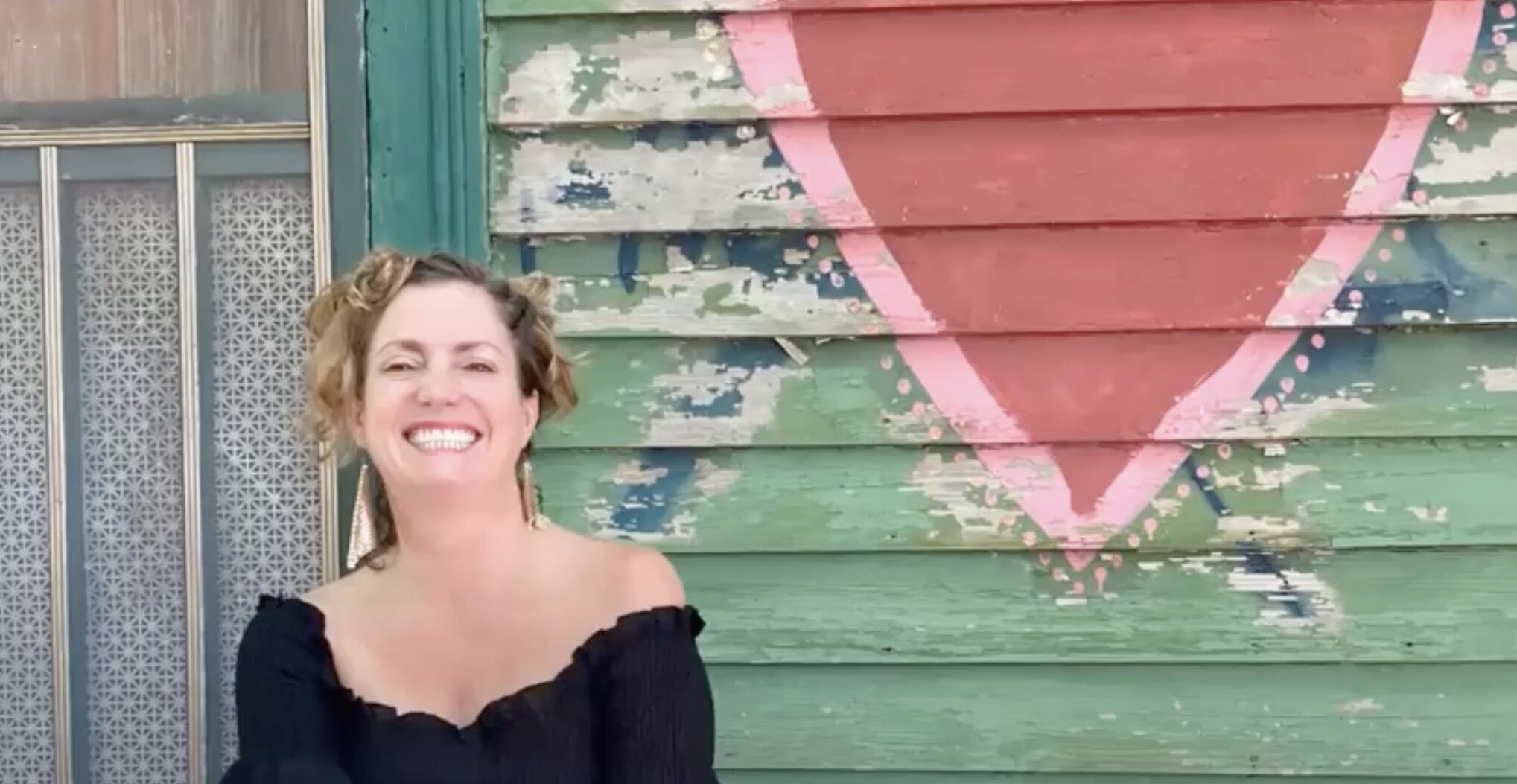By Jane Nguyen
Sarah Hirsch is a lecturer in UCSB’s Writing Program and is the 2020-2021 Charles Bazerman Faculty Fellow.
The city of New Orleans has recast a natural disaster symbol into an icon of its people’s resilience, an example of how visual rhetoric can function within a community, says Sarah Hirsch, a continuing lecturer in the UC Santa Barbara Writing Program and the 2020-2021 Charles Bazerman Faculty Fellow.
Hirsch’s research analyzes the Katrina Cross or X-Codes, which were X’s spray-painted by the Federal Emergency Management Agency (FEMA) to mark which houses needed federal assistance after Hurricane Katrina struck Louisiana in 2005.
She recently presented her research to colleagues via Zoom at the annual Bazerman lecture titled “Decoding the X: The Intersection of Visual Rhetoric and Materiality in New Orleans.” Every year, the Bazerman fellowship funds a UCSB Writing Program lecturer to take time off from teaching in order to conduct research in their field, thanks to a generous donation by Charles Bazerman, a distinguished professor of education and a trailblazer in the discipline of writing studies.
Narrating stories of people in New Orleans, Hirsch shared how they recreated the X-Codes with their own artistic and rhetorical flair, such as painting over the X’s with hearts or creating a wrought iron sculpture replica of the X.
A wrought iron sculpture replica of the Katrina Cross, a “remix” created by a New Orleans resident.
“This profound sense of place, this determination to return, to stay, to battle the odds is what the Katrina Cross conveys,” Hirsch said as she showed the iconography of Hurricane Katrina stamped on New Orleans’ landscapes.
In 2016, Hirsch developed an interest in decoding the Katrina Cross after attending a visual rhetoric panel on the many meanings that images can hold at the Conference on College Composition and Communication. She combined her new fascination with visual rhetoric with her existing interest in New Orleans, which led Hirsch to uncover the underlying messages of the spray-painted X’s and a body of literature about the Katrina Cross. Hirsch said that physically visiting New Orleans after conducting secondary research solidified her conclusions.
“It wasn’t until I stepped foot in New Orleans, that I truly felt immersed in the research,” Hirsch said. “On-the-ground research solidified my attachment to my research due to my immersion in the culture.”
The X-Codes can be found all over locations in the United States that have faced disasters similar to Hurricane Katrina. However, she found that New Orleans had redefined the natural disaster symbol by turning it into a cultural touchstone.
“The image of the X did not produce New Orleans,” Hirsch noted in her lecture. “New Orleans reproduced the X by remixing it.”
Zalia Beville is a New Orleans resident featured in “Decoding the X,” research by UCSB Writing Program lecturer Sarah Hirsch, the 2020-2021 Bazerman Faculty Fellow.
Hirsch found that various acts of reproducing the X allowed the people of New Orleans to reclaim homes that were invaded by cans of spray-paint during the emergency evacuation, and to later visually rewrite their personal narratives of casualty into tales of tenacity.
Although the X is a reminder of a tragic time in history, the remixes of the X brings solace to those who experienced the aftermath – especially to residents of lower income areas and people of color who were disproportionately affected, Hirsch explained. As a symbol that publicly exposed sociopolitical inequities of New Orleans, the remixed X became an image conveying a neighborhood’s strength for those who continued to call New Orleans home, despite the hardships they faced.
Hirsch posits that the X is proof that the house is strong enough to withstand such tragedy – a metaphor for New Orleans’ resilience. “The X is a symbol that says this house was here and it went through this,” Hirsch said. “But it’s still here and so are the people of New Orleans.”
Hirsch plans to publish her research article on the X-Codes soon and possibly expand it to a book, given the many layers she discovered in the links between the Katrina Cross and the city of New Orleans. “This book requires multiple chapters in order to fully tell the story of the Katrina Cross,” Hirsch explained. “It needs a chapter on sociopolitical issues, climate change, and, most importantly, the narratives of the people of New Orleans.”
Jane Nguyen is a fourth year UC Santa Barbara student majoring in Communication and minoring in Applied Psychology. She is a Web and Social Media Intern for the Division of Humanities and Fine Arts.




